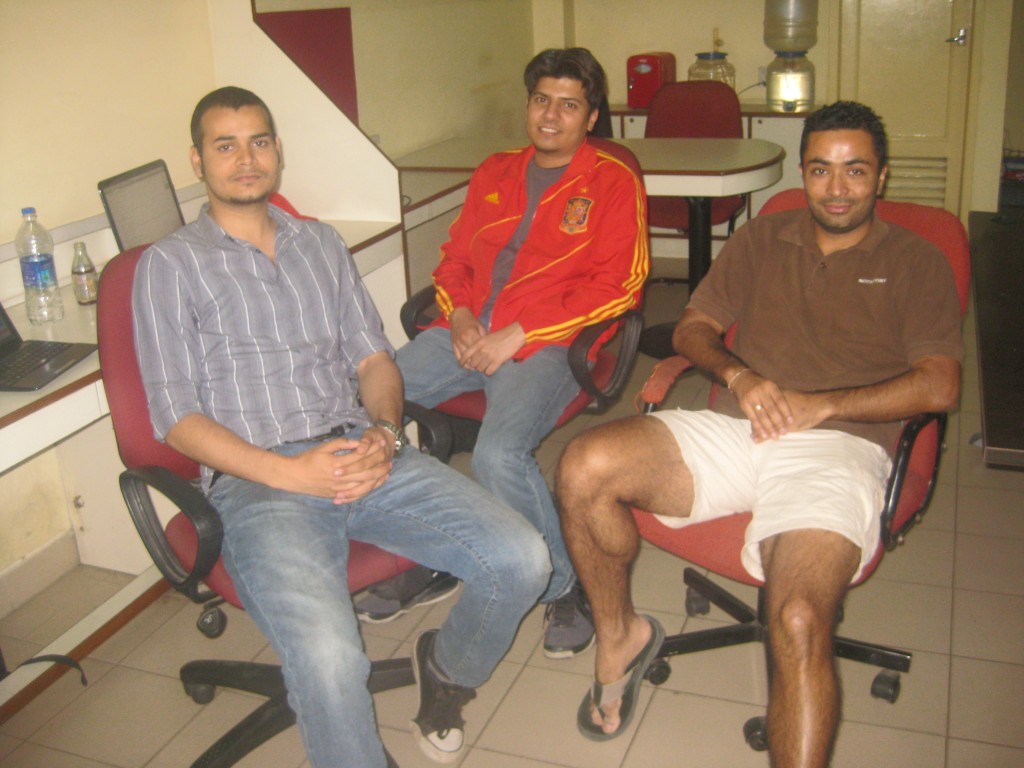Ciafo is a software products startup, based out of Bangalore focused on building consumer products for the web (including the mobile web). Ciafo has three products – Travelomy, Wayr, Frrole. In this interview, Amarpreet Kalkat, Co-Founder, Ciafo discusses aspects of building a B2C product from India and shares some of his learnings with startups. Frrole is an information exchange medium, not a unidirectional news provider. It has a heart and it likes to talk – hear from the people what they want to say, and tell them what they want to know.
What is your Story? What inspired you to be an entrepreneur?
I always had a passion for building intelligent products. If I have adequate resources, I find a way to connect the dots. This is what I have always been good at, and this is what I always wanted to do – use these skills to create intelligent products that could simplify lives.
In a large corporate setup, an individual is constrained in more ways than he can be comfortable with. A typical project manager or a product manager profile in a large company strictly limits one’s degree of freedom, thus affecting his ability to innovate. While some people love to work in a focused, defined way, I believed I needed more freedom than was possible in a normal corporate setup. By the time I realized this, I was already juggling with a few ideas in my mind. So, it was not difficult for me to quit my job and create Frrole, independently.
Why and how did you start your company? Why this Area?
We were working on our first product Travelomy and one of the features we wanted to build in there was ‘real-time social information streams’. We were surprised at not finding any readymade localized streams, so we just decided to build one of our own.
But as we started digging deeper, we could see that real-time, curated social information was missing not only in travel guides, but at a much wider level. The challenge was in separating out that 1% signal from 99% noise, and we thought that we could do it. Slowly, we became sure that this could be an independent product by itself, and that is how Frrole was born.
Why the name?
The name Frrole is a derivative of a word in Punjabi language that roughly translates into ‘to play around, to discover, to explore’. We had always thought that this project was about building a brand new way of exploring around the cities that we live in, hence the name was always there in the shortlist.
The fact that it met 6 of the 7 criteria we had for choosing the name (refer Paul Graham’s essay) and had the .com domain available, finally sealed the deal.
Also, the core of Frrole is to find and present information that is nowhere else available. Justifying its name, the application enables people to discover news from sources totally unknown to them. Just like ‘Googling’ has become a generic term for ‘finding things that are known’, we hope to see a day when ‘Frroling’ becomes a generic term for ‘discovering things that are unknown’.
What is your product’s differentiator from competitors?
Frrole is a twitter based product. It analyses a million+ tweets every day, posted by individuals, companies and mainstream media and selects 0.5% of the most informational ones among them. These tweets are then displayed to the users as news items. In doing so, Frrole creates an additional source of unbiased news, in the form of individuals like you and me. These million additional news sources are the core strength of Frrole, making it a superior product than its competitors.
The news on Frrole can be sourced from a common man like your friendly neighbor or from a giant publishing house, with complete impartiality. The core philosophy behind Frrole is to create a democratized platform using which any person can spread useful information, making each one of us a citizen journalist.
Like all other news apps and websites, Frrole gives you information collected from various news publications, blogs and your social media acquaintances. But, that is only half of what Frrole is all about. The other half is about news ‘for the people, by the people’. There cannot be any news source faster and more accurate than a common man who has witnessed an event, and this man is where Frrole sources its news from.
Other important differentiator between Frrole and its competitors is Frrole’s ability to generate localized content. Frrole lets its users select a city to enable them to get news relevant only to that city. Thus, Frrole makes you a person more aware of your surroundings, unlike any other news product.
What is the biggest challenge Frrole has faced so far? How did you address the challenge?
Not having a full-fledged, full-time team has been the biggest challenge by far. But we have come past that point and now we have a core team of three people. Nishith Sharma, an IIM Kozhikode grad who has earlier managed marketing for Jaguar Land Rover in India, takes care of marketing and Abhishek Vaid, an IIIT Gwalior grad, is responsible for building our backend analytics engine.
Who is your customer?
- We have a prize for everybody who claims he is not our customer.
- We have yet to find a person who doesn’t find value in Frrole.
- A typical customer of Frrole is somebody who can read English, aged 5-100 years old, living in any part of the world, and not totally disinterested in life.
On a more serious note, we define our core user as somebody who is 24-40 years old, socially active, and comfortable with the concept of informal information.
What are your future plans?
The mid-term future plan is to establish Frrole as the ‘world view’ news source. Something that people use to hear what the world around them is really talking about instead of being limited to only what mainstream media has to say.
In the longer term, we see ourselves doing the same thing for social web what Google did for the web – make sense of it. And while Google started with the search as the first application of that technology, we are starting with news as the first application. This technology can be applied to any more use cases as Google has shown, and we hope to emulate the same.
Your moment of Glory
Nothing really that big yet. Maybe a few small things like being called the future of news, having a TV feature on Frrole etc, hitting half million monthly unique visitors mark with only one full-time person etc.
What have been your BIG lessons – personal, professional and otherwise?
See the last response below. Those lessons for others are derived from my personal lessons.
What kind of support would you have liked?
Entrepreneurship requires three kinds of resources – Man, Material, Capital. While ‘Material’ is not very important in the software context and entrepreneurs possess the ‘Manpower’ resource, what they usually lack is ‘Capital’.
India has very few investors who invest in early stages, so the ‘Capital’ is a big constraint for Indian startups. A report comparing funding in US and India says that while more than 60% of US startups manage to secure angel funding, only 15% manage to do that in India.
The situation is especially lackluster for products that are in the consumer web space. I hope that changes soon enough; otherwise there is absolutely no chance of a Google or Twitter coming out of India any time soon.
What would you like to tell someone, who is struggling or planning to start a product company?
- Have a team. Startups are way too much work for lone founders.
- Show investors some incoming money. It’ll increase your chances of getting funded manifolds.
- Start with a founding team, finding co-founders later can be an incredibly tough task.
- Have a plan B to sustain yourself, while you are trying to make it big.
The future looks very promising for Frrole and we wish Amarpreet all the best! Don’t forget to download their iPhone or Android app.




